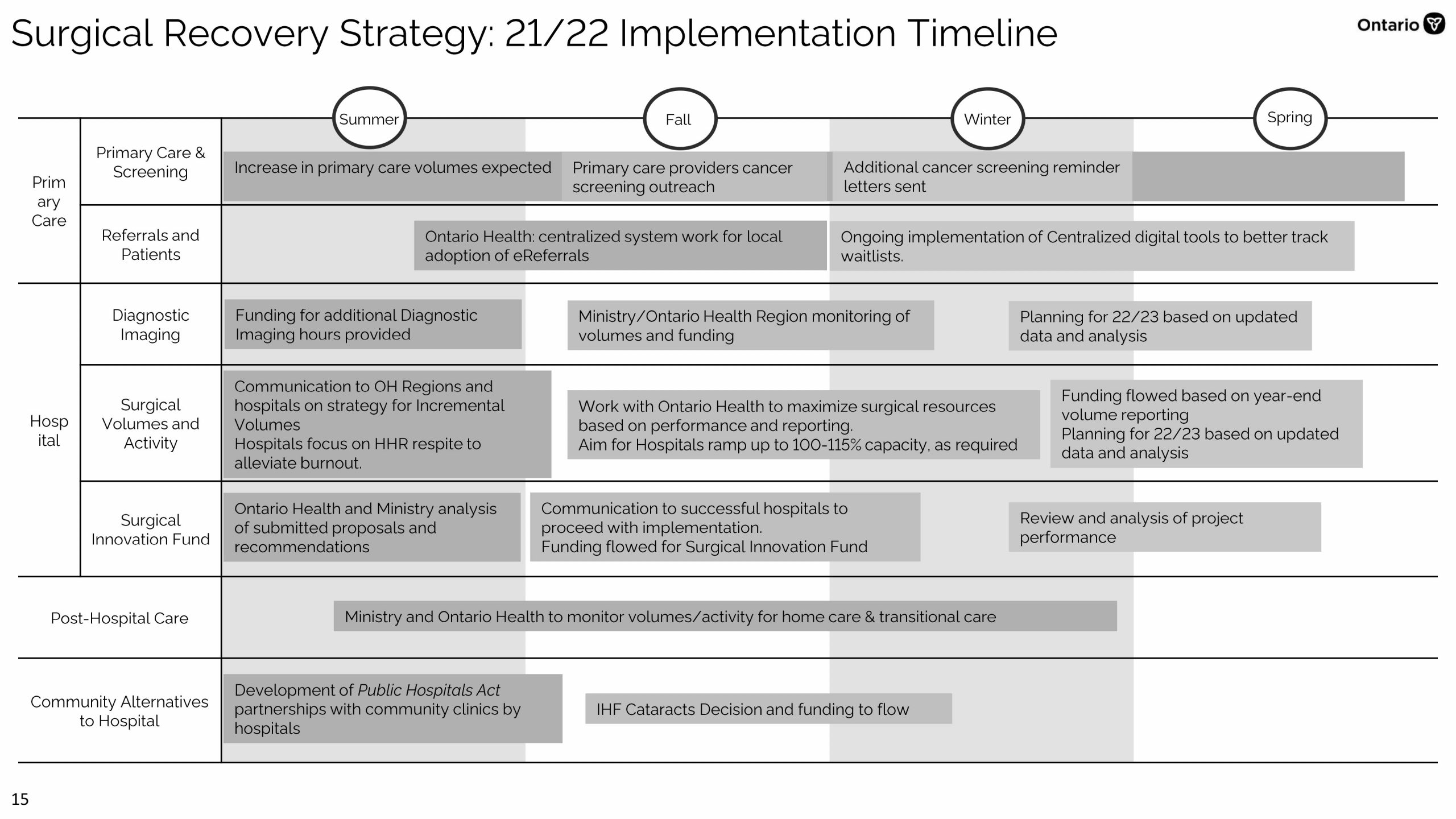Ontario to schedule evening, weekend procedures to deal with surgical backlogs
Posted July 28, 2021 1:05 pm.
Last Updated July 28, 2021 6:18 pm.
The province is set to ramp up hospital procedures in order to clear the backlog of surgeries and procedures delayed due to the COVID-19 pandemic.
The Ministry of Health’s surgical recovery plan will see hospitals and community health systems operate at between 110 to 115 per cent capacity with more surgeries performed on evenings and weekends in order to address patient wait times.
During the pandemic, those surgeries and procedures were paused in order to alleviate the strain on hospitals and ICUs, protecting hospital capacity limits for COVID-19 patients.
The province says it will provide $216 million to enable hospitals to extend operating room hours and add 67,000 new surgeries and 135,000 additional diagnostic imaging hours this fall with a goal to clear the medical backlog by spring 2022.
When pressed, neither Health Minister Christine Elliott nor Ontario Health CEO Matthew Anderson could provide an exact number of backlogged patients, saying only that there were 200,000 on surgical waitlists in Ontario which was similar to pre-pandemic levels. However, they expect more unscreened, undiagnosed patients to join the wait list for surgeries as the pandemic wanes, contributing to an expected rise in demand for procedures.
Under the province’s new plan, the focus will be on high-volume, non-urgent scheduled surgeries which make up a large portion of patients waiting for surgical care outside of recommended times.
Back in May, Ontario’s fiscal watchdog said it would take the province approximately three and a half years to clear the backlog of cancelled surgeries, which would reach 419,200 procedures by the end of September. Factoring in postponed diagnostic procedures, the number rises to nearly 2.5 million.
The FAO estimated it would cost the province $1.3 billion to clear the backlog, adding that its projections assume hospitals would be able to operate at 11 per cent above pre-pandemic volumes in the coming years.
The Ontario Medical Association (OMA) estimates there is a backlog of 15.9 million surgeries, diagnostic exams, screenings and other medical procedures that have been deferred due to the pandemic.
On Wednesday, OMA president Adam Kassam called the province’s announcement an “important and positive step forward, and represents a comprehensive approach to surgical, diagnostic & procedure recovery.”
“What we’re looking at are actual volumes of surgeries that may need to be done as rather than the modelled numbers,” Elliott explained when addressing the discrepancy in numbers. “Some of the modelling may have double counted people, may have had them in several different lineups. So those are not the numbers we’re working with. We’re working with the numbers of actual people on waitlists.”
RELATED: Ontario faces backlog of more than 300,000 breast cancer mammograms

Source: Minister of Health Surgical Recovery technical briefing
The province says between April 2020 and March 2021, over 465,000 scheduled surgeries took place in Ontario hospitals and since May 19, when the province lifted its halt on non-urgent surgeries and procedures that didn’t require inpatient resources, surgical volumes have increased 15 per cent each week.
As of March 2021, the province says 76 per cent of patients that required surgery have now received that care with 99 per cent of the most urgent and semi-urgent procedures having been completed.
Anderson also acknowledged the human resource challenge being faced by the medical community with frontline workers needing a respite while others are leaving the industry altogether.
“It’s not just the hours that people were working under, it was the stress levels they were working under,” said Anderson. “Let’s get our OR nurses back into the OR and doing the thing they love doing and they’re trained so wonderfully to do. And you immediately start to bring the stress levels down. And the same thing can be said for all healthcare workers throughout our system. That’s a key part of getting people back into their routine and the thing that they love to do and that will make a substantial difference.”
The $324 million investment announced by the government is not new money, but rather funds that were already announced in the last provincial budget.










